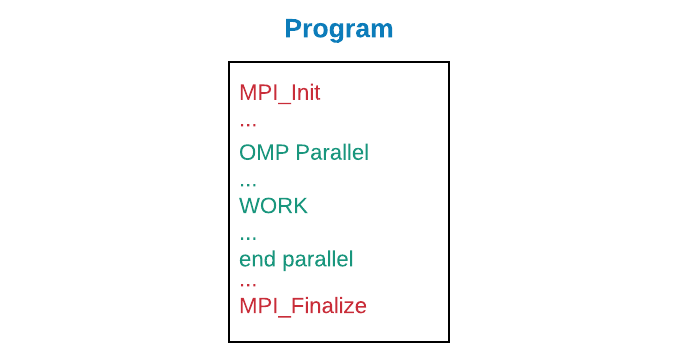Hybrid Patternlets in MPI and OpenMP¶
Hybrid programming techniques are becoming more popular as larger clusters become available. Such techniques are particularly useful when running very large problem sizes. We will program in a hybrid environment, using MPI and OpenMP. This environment will rely on both distributed memory from MPI and shared memory from OpenMP.
Pure MPI essentially has one MPI process on each core. A programming model that combines MPI and OpenMP uses MPI to distribute work among cores, each of which uses OpenMP to work on its task. In other words, MPI describes parallelism between processes and the thread parallelism in OpenMP provides a shared-memory model within a process. Conceptually, a program with 3 processes with 2 threads each looks like this:

Hybrid Program Model¶
The MPI + OpenMP model generally includes these steps:
- MPI Initialization
- OMP parallel regions within MPI process
- Finalize MPI

Source Code¶
Please download all examples from this tarball:
hybrid-MPI+OpenMP.tgz
These C code examples use the Message Passing Interface (MPI) library and OpenMP pragmas. MPI is suitable for use on either a single multicore machine or a cluster of machines. See Running the examples on your cluster for more information about running the code on a cluster of machines. You will need a C compiler with OpenMP in order to compile and run the following examples.
A C code file for each example below can be found in subdirectories of the hybrid-MPI+OpenMP directory, along with a makefile and an example of how to execute the program.
